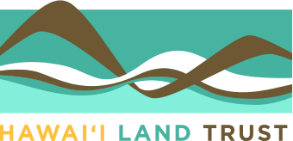Summer Intern Reflection: Kaʻimi Kaleleiki
If you ask Kaʻimi Kaleleiki about her summer as an intern in HILT’s 2023 Ahupuaʻa Stewards Leadership Program on Maui, she recalls strolling along the Piʻilani Trail, swimming in coves, and doing research on the reef. The whole summer was “super memorable” – and, yes, fun. And it gave Kaʻimi insight into what a career in conservation is like. “They’re always writing grants,” she said with a laugh.
Significantly, Kaimi’s experience at the Nuʻu and Waiheʻe refuges showed her that hands-on conservation work can be hard – both physically and emotionally taxing. But it also cemented her resolve. “It’s something that can be done with enough dedication and energy and time and grit,” she said. “More than anything, I was really inspired by how motivated a lot of these individuals are to keep this going.”
At the time, Kaʻimi, who is now studying environmental science at the University of Hawai‘i at Hilo, had just graduated from Lahainaluna High School. She reminisces about Scott Fisher, Ph.D., Director of ʻĀina Stewardship, teaching her and the other participants about the erosion mitigation project, including the plants he chose and why. “The layers and the depth that went into that thought process was super cool,” Kaʻimi said.
Denby Freeland, Director of ʻĀina Education, taught them how to make kapa by peeling off the outer layer of the wauke tree to get to the inner bark and then pounding the fibers to create the soft material. “They were able to tell us the histories, the environmental changes over the years, why this looks the way it looks, why the river runs the way it runs, why the reef responds to it, and how the dunes came about and their cultural significance,” Kaʻimi said.
Kaʻimi, who is a native Hawaiian and grew up in Lahaina, said she is fortunate that her parents strengthened her connection to the natural world and emphasized the significance of conservation by raising her in the wahi where her kupuna that were still accessible. “Being able to just wander and not have to worry about people or manmade threats and just being able to see the environment and how it lives and breathes on its own without our interference taught me a lot about myself and the world we live in,” she said.
As one of the Maui Ahupuaʻa Stewards, Kaʻimi said she could envision herself, “working in those kinds of positions as we went to those locations. That helped me see where a useful application of that interest could be in my career.” Upon graduation in 2026, Kaʻimi hopes to return home to Maui to restore loʻi and loko on her family’s kuleana lands and provide a place where people can learn about conservation and resource management.
With 80 percent of Hawaiʻi’s food imported, we must learn, “how to develop a relationship with our coasts and oceans and not just tap into them when we need to, but to create a symbiotic and reciprocal relationship with our environment. That takes skills!” she said.

